

 One would be tempted to think that in summer time with vacation going on that the Brief would be short, that sun and other more important thing would take precedence. But not so. Here is what is probably an unusually long Brief.
One would be tempted to think that in summer time with vacation going on that the Brief would be short, that sun and other more important thing would take precedence. But not so. Here is what is probably an unusually long Brief.
Not that we intended it that way. Each month we try and keep it short. (It is after all called The Brief.) But usually we fail. Sometimes we even get mail complaining that we write too much… Well, you do not have to read it it all, even if we are glad if you do. We are also glad for any comments you might have.
But this month it is simply since there has been so much happening in July and a lot of things published on BKWine Magazine.
There has been a torrent of strange things in the media about the Swedish monopoly, if you happen to be interested in that kind of things. We have published articles on several different Californian wineries, on sherry, Alsace, on an odd (dare we say revolutionary? No, we dare not) wine saver device, and many other things.
So read on.
But before that we would like to remind you about the most important thing of all.
Do take a look at this since it is thanks to this that we spend so much time and effort on the BKWine Brief and BKWine Magazine:
Our wine tours!
There are still places left on our two winter tours:
- South America with Chile and Argentina in February
- South Africa in March
Two very unique and exclusive wine tour experiences!
And if those don’t fit your timing or interests, why not contact us for a custom designed wine tour for you and your friends? We organise some 30 wine tours and personally visit some 200-300 wineries each year so you will have a hard time finding someone better placed to know where to go.
And it would be a pleasure to see you in person on one of our tours.
Britt & Per
PS: Recommend to your friends to read the Brief!
– – – – – –
What’s on at BKWine Tours
- Bordeaux, 18-22 September (closed)
- Douro Valley, Portugal, 23-27 October (closed)
- South America: Chile and Argentina, 1-16 February 2014
- South Africa, 28 February – 10 March, 2014
For more information please contact us on email or on phone (we’re on French time), or go to our wine travel site on www.bkwinetours.com!
We also make custom designed wine tours – on-demand tours for you and a group of friends, for your company (maybe to scout new winegrowers?), for a special event… We can combine winery visits and wine touring with other activities: gastronomic workshops, visit to an oyster farm, truffles hunting, cheese making, and more. More info on the custom designed and bespoke BKWine wine tours and travel here!
Wine tours in Finnish: We also do wine tours in Finnish. And in German, Norwegian, Spanish… Do you want the latest news and updates on our wine travel activity? Subscribe here! (Second alternative BKWineTours.com)
From the World of Wine
Alsace – both sunshine and excellent wines
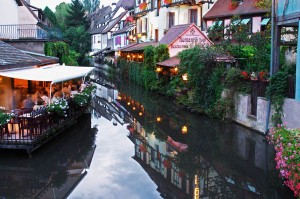 Alsace is almost unique among French wine regions in that it systematically prominently promotes the grape variety of the wine on the label, long before it became fashionable to do so. It is also, although it is in the north east, one of the driest and sunniest of the French wine regions. They make wines that genuinely Alsatian in style, rather than something that is a combination of French and German. Read more about the grand crus, the grape varieties, the history, the villages, etc, and some recommendations of good producers, in Britt’s detailed article on BKWine Magazine: Alsace – a mixture of French and German?
Alsace is almost unique among French wine regions in that it systematically prominently promotes the grape variety of the wine on the label, long before it became fashionable to do so. It is also, although it is in the north east, one of the driest and sunniest of the French wine regions. They make wines that genuinely Alsatian in style, rather than something that is a combination of French and German. Read more about the grand crus, the grape varieties, the history, the villages, etc, and some recommendations of good producers, in Britt’s detailed article on BKWine Magazine: Alsace – a mixture of French and German?
The wine tour to South America: Chile and Argentina, with BKWine in February! Time to book!
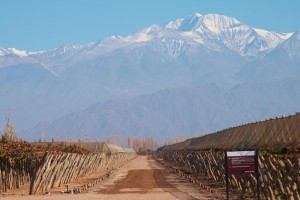 Chile and Argentina are two very intense countries and so are many of their wines. There are many parallels between the development of the countries and the wines. Today both Chile and Argentina make wines in world class. It is easy to think that all wines from here are dense power horses but that would be wrong. There are all kinds. There is a lot of experimentation going on in the wineries, exciting new things; different grape varieties; sometimes oak, sometimes not. There are plenty of things to discover. If one knows where to visit.
Chile and Argentina are two very intense countries and so are many of their wines. There are many parallels between the development of the countries and the wines. Today both Chile and Argentina make wines in world class. It is easy to think that all wines from here are dense power horses but that would be wrong. There are all kinds. There is a lot of experimentation going on in the wineries, exciting new things; different grape varieties; sometimes oak, sometimes not. There are plenty of things to discover. If one knows where to visit.
The landscape is spectacularly beautiful. Both in Mendoza and in Chile the majestic Andes mountain range is a backdrop to the vineyards.
The BKWine wine tour to Chile and Argentina starts with a day at an estancia on the Pamapas followed by a couple of days in Buenos Aires, including tango of course. Then we head to Mendoza: lots of wines, lots of asado (the Argentinean version of a barbecue orgy), lots of everything! Then we cross the Andes on a spectacular road journey over the mountains. In Chile we stay, among other places, in a charming hotel in Santa Cruz, learn how to be a winemaker (for a day), more asado, many vineyard visits, discover Santiago and, not to miss, Valparaiso! Winery visits, gastronomic feasts, and the charms and sights of two Latin American countries in a nutshell. Read more on wine travelling in Chile and Argentina here, including pictures and video.
Join us, Britt and Per, on this unique and exclusive wine tour / gourmet tour to Chile and Argentina. Book now!
Travel to the world’s wine regions with the wine experts and with the wine tour speicalist!
French breakfasts, stirring the salad and wine to vinaigrette | Britt’s Column
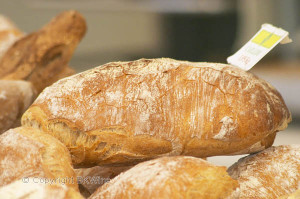 “What? No cheese and ham, and no muesli for breakfast?” No, that is not acceptable, Britt writes in her latest column. Well, to be clear, not acceptable to complain about the breakfast. One of the joys and charms of travelling is that things are not exactly as at home. That you get croissants for breakfast in France, and cakes and cookies in Italy, and lots of different dishes in China but no bread. Why else do you want to go travelling? How Britt then ties this together with the mysteries of the French salad is, well, a mystery to me. But she does. She also tells you how to succeed a French salad and what wine to choose with to go with it in her latest column on BKWine Magazine: When in Rome do as the Romans. The joys of a French breakfast.
“What? No cheese and ham, and no muesli for breakfast?” No, that is not acceptable, Britt writes in her latest column. Well, to be clear, not acceptable to complain about the breakfast. One of the joys and charms of travelling is that things are not exactly as at home. That you get croissants for breakfast in France, and cakes and cookies in Italy, and lots of different dishes in China but no bread. Why else do you want to go travelling? How Britt then ties this together with the mysteries of the French salad is, well, a mystery to me. But she does. She also tells you how to succeed a French salad and what wine to choose with to go with it in her latest column on BKWine Magazine: When in Rome do as the Romans. The joys of a French breakfast.
Wine tour to South Africa with BKWine in March. Book now!
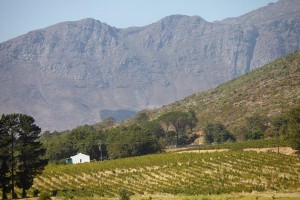 South Africa has with good reason moved up to become one of the top new world wine countries. It has gained a reputation of providing very good wines, if you know where to go. It is a wine country that is very dynamic, just like the country as a whole. Over the last 20 years the country has changed radically and so have South Africa’s wines.
South Africa has with good reason moved up to become one of the top new world wine countries. It has gained a reputation of providing very good wines, if you know where to go. It is a wine country that is very dynamic, just like the country as a whole. Over the last 20 years the country has changed radically and so have South Africa’s wines.
The “old” and well known wine regions in South Africa, like Franschhoek and Stellenbosch, now face completion from newer regions, Durban, Paarl, and not least Swartland. The traditional big-name producers (often those that are well known on export markets) have to fight to keep their place against new and dynamic wineries. There is more and more talk of terroir, origin, elegance and depth in the wines. The best are world class today.
On the wine tour to South Africa with BKWine you will get the opportunity to experience all this first hand. You will meet the winemakers that have put South Africa on the world map of quality wines, taste with them and discuss. We at BKWine will give you a unique insight into the wines of South Africa.
But not only that. A few days in Cape Town, with all its sights. Excursions to, for example, the Cape of Good Hope and the Table Mountain. Lots of gastronomic meals (including the famous braai, South Africa’s own barbeque orgy), spectacular sceneries, vast wilderness… And, if you want, a very luxurious wildlife safari to finish it off. Read more on wine touring in South Africa here, including pictures and videos.
Join us, Britt and Per, on this unique and exclusive wine tour / gourmet tour to South Africa. Book now!
Travel to the world’s wine regions with the wine experts and with the wine tour speicalist!
Add water to desired strength (water into wine?)
Michel Chapoutier in the Rhone Valley is fond of saying controversial things. A few weeks ago he talked in Drinks Business about how to best get rid of some of the alcohol in high alcohol wines. Best method, he says, is the simplest. Dilute the wine with water. He believes that it does not change the character of the wine and is gentler on the wine than other methods, such as reverse osmosis.
After reading about this I thought, but why should the winemaker dilute his painstakingly made wine with water? Why not let the consumer decide if she wants to drink the wine with its original alcohol level or add water to lower it? I organized a small blind tasting for Per to see if he could taste the difference of 2% alcohol. In one glass, he had the original wine, a Cahors with 14.5% alcohol. In the other glass the same wine diluted to 12.5%. He actually did taste the difference immediately. Less body, less fullness with 12.5%. But perfectly drinkable. Good idea? Well, maybe. On some wines. (Editors note: the diluted wine was not at all as delicious as the ”cask strength” one!)
1000 Likes on Facebook for BKWine Magazine
 It is nice to know that what one does is appreciated . Perhaps we can take it as a sign that at least some wine lovers out there like what we do. We recently passed 1000 “Likes” on Facebook! Thank you to all you readers out there!
It is nice to know that what one does is appreciated . Perhaps we can take it as a sign that at least some wine lovers out there like what we do. We recently passed 1000 “Likes” on Facebook! Thank you to all you readers out there!
- If you don’t already “Like” us on Facebook you Like us here: BKWine Magazine on Facebook. (And also BKWine Wine Tours on Facebook)
- Please do recommend to your friends that they to get a free subscription to the BKWine Brief!
- And why not come and join us on a wine tour? It is thanks to our wine tours that we can continue doing what we do! And then we would also get the opportunity to meet you in real life!
2013 – a good year in Argentina
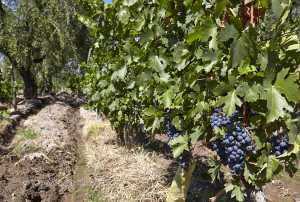 They are 6 month ahead in the southern hemisphere so the harvest in e.g. Argentina is finished. This year the Argentinean harvest has been an extended event. But in the end it seems that the quality is more than satisfactory according to the reports. In most wine districts grower seems very happy. Read more on this in BKWine Magazine: 2013 is a great vintage in Argentina, the producers report
They are 6 month ahead in the southern hemisphere so the harvest in e.g. Argentina is finished. This year the Argentinean harvest has been an extended event. But in the end it seems that the quality is more than satisfactory according to the reports. In most wine districts grower seems very happy. Read more on this in BKWine Magazine: 2013 is a great vintage in Argentina, the producers report
By the way, do you know which the most grown grape variety in Mendoza is? Perhaps not the one you think. You have the answer in the article.
Stormy weather in July
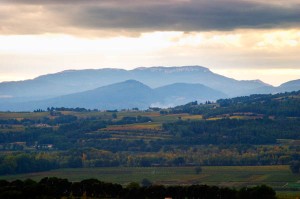 Burgundy suffered from disastrous hail storms on July 23. In the Côte de Beaune some wineries have had their entire vineyard destroyed. The agriculture minister Stephane Le Foll were quick to announce that victims would receive tax credits to meet the financial shortfall.
Burgundy suffered from disastrous hail storms on July 23. In the Côte de Beaune some wineries have had their entire vineyard destroyed. The agriculture minister Stephane Le Foll were quick to announce that victims would receive tax credits to meet the financial shortfall.
1350 hectares around the town of Beaune were affected by the storm, which lasted for 45 minutes. From 5 up to 100 % of the affected vineyards have been destroyed. There may be a loss of up to 30 000 hectoliters of wine in 2013. Many Burgundy growers are already burdened this season. Incessant rains caused flooding in May and to top it all, last year also gave a reduced volume.
Read about the hail storm at La Vigne
Caillou blanc de Château Talbot 1993, Bordeaux Blanc | Britt’s Wine of the Month
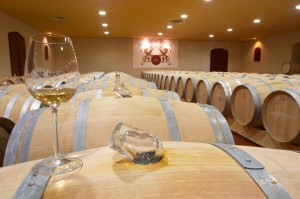 White Bordeaux wines can be really good. The fact is that we are rarely disappointed. And yet they are relatively unknown. Some white Pessac-Léognans made in small volumes are sold at high prices, but the rest of the white Bordeaux wines are living a fairly quiet life. There are not that many of them. Only 11% of Bordeaux wines are white.
White Bordeaux wines can be really good. The fact is that we are rarely disappointed. And yet they are relatively unknown. Some white Pessac-Léognans made in small volumes are sold at high prices, but the rest of the white Bordeaux wines are living a fairly quiet life. There are not that many of them. Only 11% of Bordeaux wines are white.
But look for these wines and buy them. The label says Graves, Bordeaux blanc, Entre-deux-Mer or Pessac-Léognan. All (except some Pessac-Léognan) will be reasonably priced. Some are dominated by Sauvignon Blanc and has a fresh, aromatic style. Others by sémillon and are more discreet on the nose but fuller and richer in flavour.
My Wine of the Month comes from the Médoc. Here you are not allowed to make white wines, but if you do you can only name them Bordeaux, not Médoc. Some of the famous chateaux here in the Médoc make some white now. Château Talbot was one of the pioneers. We bought this 1993 for the cheap price of 65 French francs in 1995. The wine has kept incredibly well all these years. Hardly any oxidation at all. Just a ripening of the fruit and depth of flavours show that twenty years have actually passed. Very enjoyable wine.
Uncorked: good wines in July
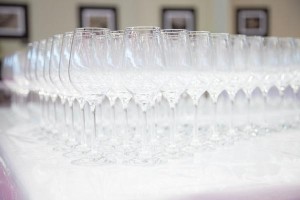 Under our new heading ”uncorked” we give you short comments on wines that we have drunk recently and that we have liked. A mixed bag of goodies one could call it. This month: Marius 2012 By Michel Chapoutier, Domaine le Clos du Serres Les Maros and Le Clos, Domaine Philippe Prunier Damy Les Grands Champs 2002, Clos Henri 2009 Pinot Noir, Champagne Devaux, Cuvée D, Château Lynch-Bages 1992, Domine Guyon, Nuits Saint Georges 1999…. Read what we thought about them and Britt’s tasting notes on BKWine Magazine: Uncorked: Good wines we have tasted recently, July 2013
Under our new heading ”uncorked” we give you short comments on wines that we have drunk recently and that we have liked. A mixed bag of goodies one could call it. This month: Marius 2012 By Michel Chapoutier, Domaine le Clos du Serres Les Maros and Le Clos, Domaine Philippe Prunier Damy Les Grands Champs 2002, Clos Henri 2009 Pinot Noir, Champagne Devaux, Cuvée D, Château Lynch-Bages 1992, Domine Guyon, Nuits Saint Georges 1999…. Read what we thought about them and Britt’s tasting notes on BKWine Magazine: Uncorked: Good wines we have tasted recently, July 2013
Here’s how much you are allowed to harvest in Champagne this year
Champagne has now decided how many kilos of grapes that growers will be allowed to pick this fall. Champagne differs from other districts in France when it comes to determining the yield. In Champagne they make an assessment every year of how the market looks and based on that they decide how much champagne they will produce and thus, how many kilos of grapes they need to pick. This year the yield will be relatively low. Although export figures for non-European countries look pretty good, within the EU and France things are on the down side.
This year, growers are allowed to commercialize 10,500 kilos of grapes per hectare. They can harvest 10, 000 kilos in total and use old reserve wine equivalent to 500 kilos when doing the blending next spring. This amount of grapes will be transformed to 305 million bottles of Champagne.
Vine growers will also have the opportunity to pick an additional of 3,100 kg per hectare to put aside as a personal reserve wine. So in total the grower can harvest 13,100 kilos per hectare this year which is the equivalent of 84 hectolitres per hectare. The highest yield allowed in France for an appellation wine no doubt. More: lachampagneviticole.fr
Government sales campaigns for organic wines?
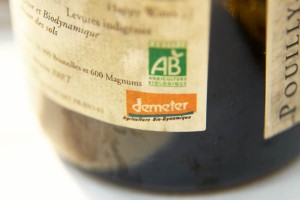 The organic winegrowers in Languedoc-Roussillon say that the state, through advertising campaigns, should encourage French people to drink organic wines. It is difficult for us to do it ourselves, say the growers. They argue that the campaigns could provide information on environmental impact and water saving but also about the social role because organic farmers use more labour than conventional ones.
The organic winegrowers in Languedoc-Roussillon say that the state, through advertising campaigns, should encourage French people to drink organic wines. It is difficult for us to do it ourselves, say the growers. They argue that the campaigns could provide information on environmental impact and water saving but also about the social role because organic farmers use more labour than conventional ones.
Approximately 10% of the Languedoc Roussillon wine region is now organic. 17,000 hectares are registered now and it will probably be 20,000 next year. Read in La Vigne about organic growers in Languedoc.
The idea that the state should help with the marketing because the state encourages farmers to grow organically, is perhaps a good thought. But possibly somewhat naive given the strict laws on advertising of alcoholic beverages in France.
No, not Bacardi and not Absolut. The world’s top-selling spirits brands
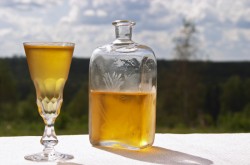 The spirits industry is much more concentrated than the wine industry, and I am not talking about the alcohol contents. But even if one can easily think that the spirits market is dominated by a few big international brands that is not the case. If you add up the 100 biggest sellers they only represent some 25% of the 808 million 9-liter cases that were sold in 2012.
The spirits industry is much more concentrated than the wine industry, and I am not talking about the alcohol contents. But even if one can easily think that the spirits market is dominated by a few big international brands that is not the case. If you add up the 100 biggest sellers they only represent some 25% of the 808 million 9-liter cases that were sold in 2012.
On the top-ten list there is only one of the two brands mentioned in the headline (which?) and my guess is that you have never heard of more than half of the top ten brands. Make a guess: Which is the world top selling spirits brand? Read more on BKWine Magazine: The world’s biggest spirits brands 2012
Revolution in Sweden? Alcohol monopoly to be abolished?
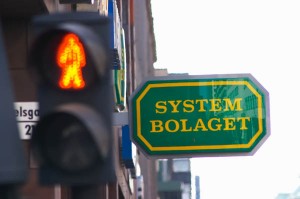 No, not yet. It is likely to happen in Pennsylvania in the autumn but not in Sweden. In Sweden it will take more time. But there is quite a lot of discussion at the moment, with some exotic elements. The CEO of the Systembolaget (monopoly retailer) has in several articles in the press attacked the (entirely legal) internet shops selling to consumers. She has also painted a “night-mare” scenario where an impressive 30 % of all sales of alcohol is done on the internet (“how horrible if so much alcohol is sold by emarchants on the net!”). However, she fails to mention (or has misread the report that the numbers come from) that by far the biggest part of it will be provided by the monopoly itself. In another astonishing article Carl B Hamilton, who is a “liberal” politician that sits on the board of the monopoly states that “even the biggest wine shops in Paris, Milan or Barcelona has at the most 600-800 products”. Sitting on the board of one of the world’s biggest alcohol retailers, one would think he should know. I went to our regular grocery shop in the outskirts of Paris and counted some 1200… If you live in any of those cities, what’s your impression?
No, not yet. It is likely to happen in Pennsylvania in the autumn but not in Sweden. In Sweden it will take more time. But there is quite a lot of discussion at the moment, with some exotic elements. The CEO of the Systembolaget (monopoly retailer) has in several articles in the press attacked the (entirely legal) internet shops selling to consumers. She has also painted a “night-mare” scenario where an impressive 30 % of all sales of alcohol is done on the internet (“how horrible if so much alcohol is sold by emarchants on the net!”). However, she fails to mention (or has misread the report that the numbers come from) that by far the biggest part of it will be provided by the monopoly itself. In another astonishing article Carl B Hamilton, who is a “liberal” politician that sits on the board of the monopoly states that “even the biggest wine shops in Paris, Milan or Barcelona has at the most 600-800 products”. Sitting on the board of one of the world’s biggest alcohol retailers, one would think he should know. I went to our regular grocery shop in the outskirts of Paris and counted some 1200… If you live in any of those cities, what’s your impression?
We have written extensively on this in Swedish so if you are interested look at our “debate” articles in Swedish on alcohol politics and use Google translate. Or you can read the very short introduction on BKWine Magazine: The alcohol monopoly to be abolished?
Gonzales Byass Tio Pepe Fino En Rama | Roland’s Wine of the Month
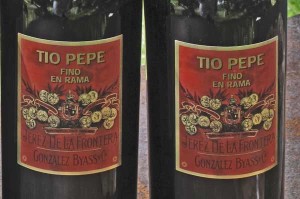 The wine of the month wine is a bit special, Tio Pepe Fino en Rama Gonzales Byass is a limited edition of 10,752 bottles of wine bottled directly from the barrels without any filtration or fining when “flor cover” was at its thickest in the spring of 2013. My bottles were bottled on April 8, 2013 and should be consumed within three months in order to maintain maximum freshness. A pale yellow wine with a great intense, slightly perfumed aroma reminiscent of white lilacs, citrus, freshly baked bread and yeast. The palate is dry and full-bodied, with a slightly perfumed grapey aroma, with hints of yeast and a delicious bitterness in the end, a long spicy finish with balanced astringency. Totally worth + + + + +. A bargain! The wine is suitable as an aperitif, to Pata Negra, olives, Manchego cheese and all kinds of tapas, such as shrimp with a lot of garlic or grilled octopus. (A steal at around 16 euro.)
The wine of the month wine is a bit special, Tio Pepe Fino en Rama Gonzales Byass is a limited edition of 10,752 bottles of wine bottled directly from the barrels without any filtration or fining when “flor cover” was at its thickest in the spring of 2013. My bottles were bottled on April 8, 2013 and should be consumed within three months in order to maintain maximum freshness. A pale yellow wine with a great intense, slightly perfumed aroma reminiscent of white lilacs, citrus, freshly baked bread and yeast. The palate is dry and full-bodied, with a slightly perfumed grapey aroma, with hints of yeast and a delicious bitterness in the end, a long spicy finish with balanced astringency. Totally worth + + + + +. A bargain! The wine is suitable as an aperitif, to Pata Negra, olives, Manchego cheese and all kinds of tapas, such as shrimp with a lot of garlic or grilled octopus. (A steal at around 16 euro.)
Read Roland’s article on Tio Pepe en Rama and a short introduction to sherry on BKWine Magazine: Sherry, a great wine which is also available as a perishable good
Bonarda, the second most grown quality grape in Argentina
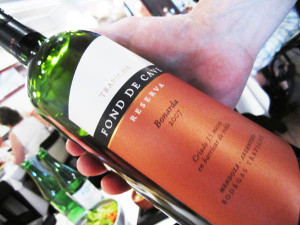 Bonarda could well deserve a bit more attention. It is actually the second most grown “quality” grape in Argentina. (Argentinean grape statistics is sometimes a bit confusing, just like Argentinean inflation statistics. Often it does not include grapes that are not considered to be “quality” grapes, like e.g. criolla and cereza. But sometimes they are included.)
Bonarda could well deserve a bit more attention. It is actually the second most grown “quality” grape in Argentina. (Argentinean grape statistics is sometimes a bit confusing, just like Argentinean inflation statistics. Often it does not include grapes that are not considered to be “quality” grapes, like e.g. criolla and cereza. But sometimes they are included.)
Bonarda makes eminently drinkable wines, excellent every-day wines, and sometimes very good wines. We had plenty of occasions to try that on the wine tour to Argentina. But rarely they reach the summit. But perhaps that will come too. What is considered as suitable grapes to make top quality wines has a tendency to change over time, and with the talent of the winemakers. But perhaps we should not call bonarda bonarda at all… Read more on BKWine in Per’s article on Magazine: Argentina’s second grape variety is…. bonarda. But it is not.
Allegrini: A family business with vineyards in Valpolicella (and some other places)
 At a lunch and wine tasting recently Roland had the opportunity to discuss with Marilisa Allegrini. She is part of the current generation that manages Allegrini in Veneto, one of the leading producers of amarone wines and of Valpolicella. But today they also have vineyards in other places in Italy.
At a lunch and wine tasting recently Roland had the opportunity to discuss with Marilisa Allegrini. She is part of the current generation that manages Allegrini in Veneto, one of the leading producers of amarone wines and of Valpolicella. But today they also have vineyards in other places in Italy.
Read Roland Ericsson’s article on Allegrini, including tasting notes on verticals of La Grola and the prestige cuvee La Poja, on BKWine Magazine: Allegrini’s La Grola in Valpolicella celebrates 30 year anniversary!
Two interesting wine producers in California: Rodney Strong and Foppiano Vineyards
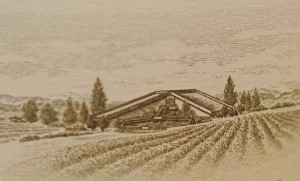 Rodney Strong started a career in winemaking in California after having retired from dancing at the Lido in Paris. The Foppiano family came to California during the gold rush but did not find any gold. Instead they bought some land and planted vines. Both are today successful Californian wineries.
Rodney Strong started a career in winemaking in California after having retired from dancing at the Lido in Paris. The Foppiano family came to California during the gold rush but did not find any gold. Instead they bought some land and planted vines. Both are today successful Californian wineries.
Read Ulf Bengtsson’s article on these two Californian wine producers, including extensive tasting notes, on BKWine Magazine: Bottled Californian Sunshine: A Tasting of Wines from Rodney Strong and Foppiano
Summer is champagne season | Ulf’s Wine of the Month
A warm summer evening Ulf Bengtsson is sitting on the grass in the park enjoying the bubbles (and everything around the bubbles). “I pour some champagne and try to understand what I have in the glass. And why it’s so good. A fresh, lovely, summery scent jumps at me. Some apples, a little liquorice. Old winter apples, modest acidity. Rather a massive, complex champagne with a lot of power and body. Almost on the verge of being a little naughty too. Must remember to buy more bottles of this wine!” Ulf waxes so lyrically over the glass that you will have to read the whole text (that is to long to be published here) on BKWine Magazine: Summer is champagne season! Any guess on what he was drinking?
Ridge Vineyards: how it all started going downhill with wines
 Magnus Reuterdahl blames much of it on Ridge. It was Ridge that first put him on the slippery slope of drinking better and better wines: “Ridge was one of the first wines I drank that really was a revelation, an eye-opener. This was sometime around 1995.” Ridge Vineyards is a legendary vineyard in California. Their winemaker Paul Draper is also a legend in the wine world. Ridge was among the first to show the way towards quality wines in California. Recently Magnus had the opportunity to meet with the man behind Ridge, Paul Draper. Read Magnus Reuterdahl’s article, including extensive tasting notes, on BKWine Magazine: Paul Draper, Ridge Vineyards, philosopher and winemaker
Magnus Reuterdahl blames much of it on Ridge. It was Ridge that first put him on the slippery slope of drinking better and better wines: “Ridge was one of the first wines I drank that really was a revelation, an eye-opener. This was sometime around 1995.” Ridge Vineyards is a legendary vineyard in California. Their winemaker Paul Draper is also a legend in the wine world. Ridge was among the first to show the way towards quality wines in California. Recently Magnus had the opportunity to meet with the man behind Ridge, Paul Draper. Read Magnus Reuterdahl’s article, including extensive tasting notes, on BKWine Magazine: Paul Draper, Ridge Vineyards, philosopher and winemaker
Wine orgy in Norway with a wine tie, with #winelover | Magnus’ Wine of the Month
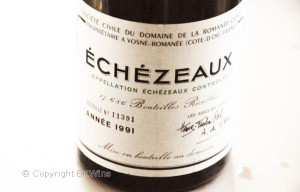 I am not sure what the best expression is in English but in Sweden they say “choosing between pest and cholera”. More evocative than “between a rock and a hard place”. Perhaps “between Scylla and Charybdis” better shows the trauma. Facing the dilemma to choose a Wine of the Month, after what must be labelled the #winelover wine orgy of the century (or at least of July, in Norway) Magnus simply could not decide. Between Chateau Cheval Blanc 1982 and Domaine de la Romanée Conti Echezeaux 1991. Yes, I understand it must have caused a lot of anguish. So he made it two Wines of the Month. Read all the juicy details of Magnus Reuterdahl’s two Wines of the Month on BKWine Magazine: An ass between two piles of hay, but what hay piles!
I am not sure what the best expression is in English but in Sweden they say “choosing between pest and cholera”. More evocative than “between a rock and a hard place”. Perhaps “between Scylla and Charybdis” better shows the trauma. Facing the dilemma to choose a Wine of the Month, after what must be labelled the #winelover wine orgy of the century (or at least of July, in Norway) Magnus simply could not decide. Between Chateau Cheval Blanc 1982 and Domaine de la Romanée Conti Echezeaux 1991. Yes, I understand it must have caused a lot of anguish. So he made it two Wines of the Month. Read all the juicy details of Magnus Reuterdahl’s two Wines of the Month on BKWine Magazine: An ass between two piles of hay, but what hay piles!
Serve the wine without pulling the cork and keep it fresh indefinitely
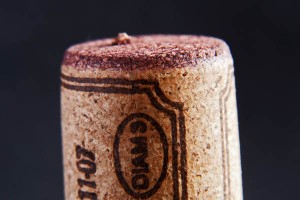 I just discovered a brand new “device” to keep an opened bottle of wine fresh for a long time: Coravin. A clever little thing that with which you don’t even need to pull the cork out of the bottle. Supposedly you can keep the “opened” bottle of wine for weeks or perhaps even months without it going bad. (Why you would want to is a mystery!) You simply pour what you want through (!) the cork. Read more on this device, and on other types of “wine savers” (vacuum, gas, etc) in Per’s article on BKWine Magazine: A new device to preserve an opened bottle of wine
I just discovered a brand new “device” to keep an opened bottle of wine fresh for a long time: Coravin. A clever little thing that with which you don’t even need to pull the cork out of the bottle. Supposedly you can keep the “opened” bottle of wine for weeks or perhaps even months without it going bad. (Why you would want to is a mystery!) You simply pour what you want through (!) the cork. Read more on this device, and on other types of “wine savers” (vacuum, gas, etc) in Per’s article on BKWine Magazine: A new device to preserve an opened bottle of wine
Wine events calendar
Send us an email if you have some event you want on the calendar.
Don’t be an egoist! Share with your friends and other wine enthusiasts! Forward the Brief to your friends! Suggest that they sign up for a free subscription !
© Copyright BKWine







